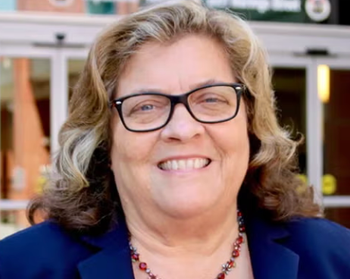
Maulik Majmudar of Biofourmis talks about hospital at home | ViVE Conference

The company's chief medical officer and co-founder shares insights for systems looking to offer acute care at home.
Nashville - As a cardiologist, Maulik Majmudar understands the need to be cautious when it comes to patients.
But Majmudar, the chief medical officer and co-founder of Biofourmis, says there’s plenty of evidence showing that hospital-at-home programs can be safe and effective. The Boston-based firm is working with more than 30 hospitals to deliver care in the home.
“The adoption curve for new initiatives, new care models, new technologies, is extremely long in healthcare,” Majmudar says. “And some of it is warranted. It’s patient safety, it’s patient trust, and you need evidence and validation."
“But in this specific instance, hospital at home, it’s a very well-studied model,” he adds.
- Read more:
Hospital at home: Special report
Majmudar points to studies internationally, and in the U.S., illustrating that acute care can be delivered safely in the home.
“There’s no doubt in my mind that it’s a safe program,” he says. “And it’s in fact effective.”
“A lot of patients recover faster in the home environment than in the hospital environment,” Majmudar adds. “Hospital-acquired infections are significantly lower in a home setting than in hospital settings.”
Majmudar talked with Chief Healthcare Executive® about hospital-at-home programs at the ViVE conference. He outlines some of the keys to success, the encouraging returns and the company’s recent experience in delivering acute care in rural areas of West Virginia and Kentucky.
(See part of our conversation in this video. The story continues below.)
Alignment and investment
More hospitals have launched hospital-at-home programs, though some systems have been hesitant to move forward due to concerns about federal reimbursement in the future. As of March 20, 277 hospitals in 37 states are authorized to deliver acute care at home, according to the
Health systems need to have alignment throughout the system to build a successful hospital-at-home program, Majmudar says. The system’s top leadership needs to be behind the model, but they have to work with clinicians and the technology leaders across the system to enable the program to thrive.
“You really want to make sure there’s really great alignment for internal stakeholders so they really understand the value and the need for such a program,” Majmudar says. “Of course, followed by that is the process and technologies to really make sure we can actually scale these programs. And finally, perhaps the biggest challenge for a lot of hospitals is actually the operations and logistics of launching a program.”
It's important that clinicians “have a say in how the program gets designed,” he adds.
“You don’t want a program that’s just pushed from the top down,” he adds. “It just doesn’t work with physicians. You want to engage them in the process.”
It takes a great deal of investment up front to launch a hospital-at-home program, so the key is serving enough patients so systems can get a return on that investment. He suggests programs eventually need an average daily census of around 20 patients.
“You want some level of scale,” Majmudar says. “Otherwise it feels like you bring a lot of investment and very little returns.”
Rural settings
Some health leaders have wondered if hospital-at-home programs can work in rural settings, Majmudar acknowledges. Biofourmis is involved with a rural program that hopes to answer that question more definitively.
The company is working with
So far, the returns are encouraging, Majmudar says. Patients in the program haven’t suffered adverse events, he says. Hospital-at-home programs could offer better care to those in rural areas who don’t have easy access to a hospital.
“Quite frankly they have the highest need,” Majmudar says. “Those patients have to travel hours to get to a hospital.”
If a patient is in a hospital far from their home, it makes it more difficult for families to visits.
“To be able to recover in the home … is very appealing to that geography,” he says.








































